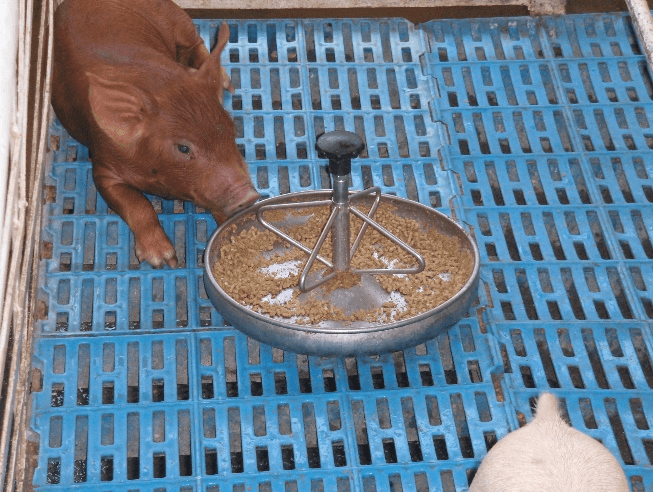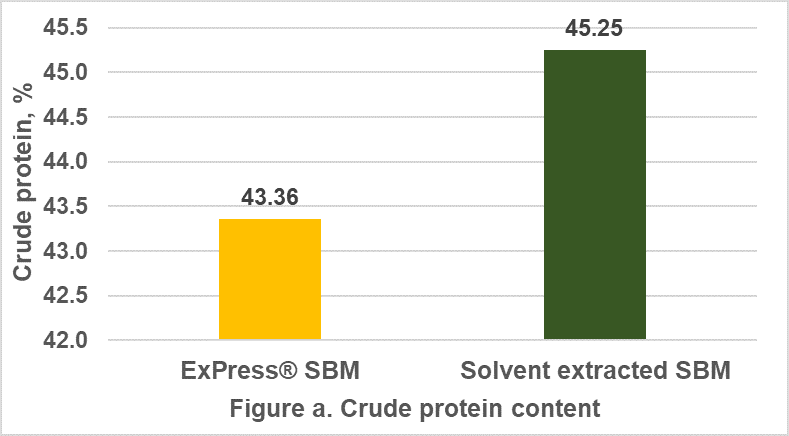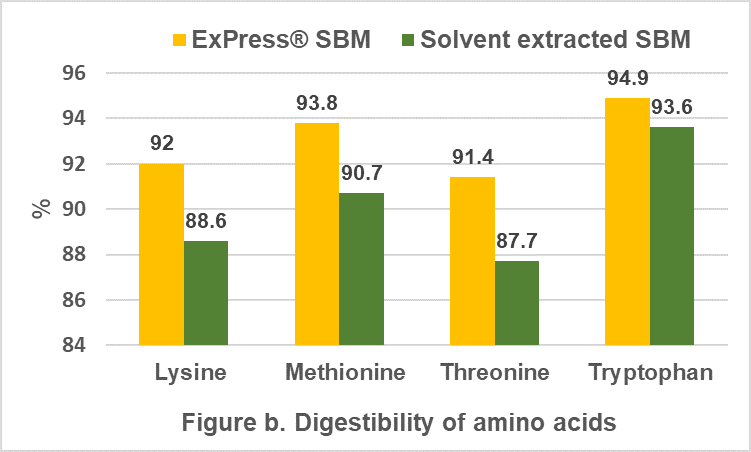Pigs require amino acids to grow: Choose the proper sources of digestible amino acids for your diets

It is well known that one component that accounts for a large part of feed costs whether at a large or small scale producer is the protein. The question is: Do we need to formulate diets to satisfy crude protein requirements? Let’s consider some important concepts first.
Proteins are composed of amino acids which are bound to protein sources. When a protein source is added to a specific diet, the peptide bonds of amino acids are broken down and released during digestion and absorbed from the intestine to be used to build new body protein. Amino acids have crucial roles in all stages of the pig’s life; in fact, they need amino acids in specific quantities and proportions according to the growing phase (weanling pigs, growing finishing) or physiological condition (e.g. lactating and gestating sows).
These requirements originate from research experiments, and have been summarized in tables, which contain nutrient specifications for each situation. In addition, details of amounts and proportions required for maintenance of body and other functions in order to meet the ideal amino acid profile for each situation, are also included.
Given the crucial role of amino acids in the animal body, the answer is that pigs do not require crude protein per se; instead, it is the amino acids, their components, which are the essential nutrients. For many years, pig diets were formulated to meet crude protein requirements rather than amino acids; however, with the current available information about the digestible values of amino acids and their composition in many ingredients, it is possible to formulate diets accurately on the amino acid basis. This is aligned with the availability of ingredients of high nutritional value to implement precision feeding based on digestibility of amino acids.
A good example is shown in this study (Hans H. Stein, Monogastric Nutrition Laboratory, University of Illinois) conducted recently which demonstrated the greater digestibility of amino acids of ExPress® soy meal vs. hexane-extracted soybean meal in diets for growing pigs as illustrated in the following figures:


The crude protein content was lower in ExPress® (Figure a), however, the digestibility of limiting amino acids in diets for pigs was greater with ExPress® soymeal in comparison with the hexane-extracted soybean meal (Figure b). ExPress® soy meal can be used by nutritionists of small-scale pork producers and big integrators to formulate swine diets with the support of the nutrition team of Insta-Pro®. Reach out to our nutrition team to discuss the study further.



